Pilot Custom Urushi Fountain Pen—More Like a Toy
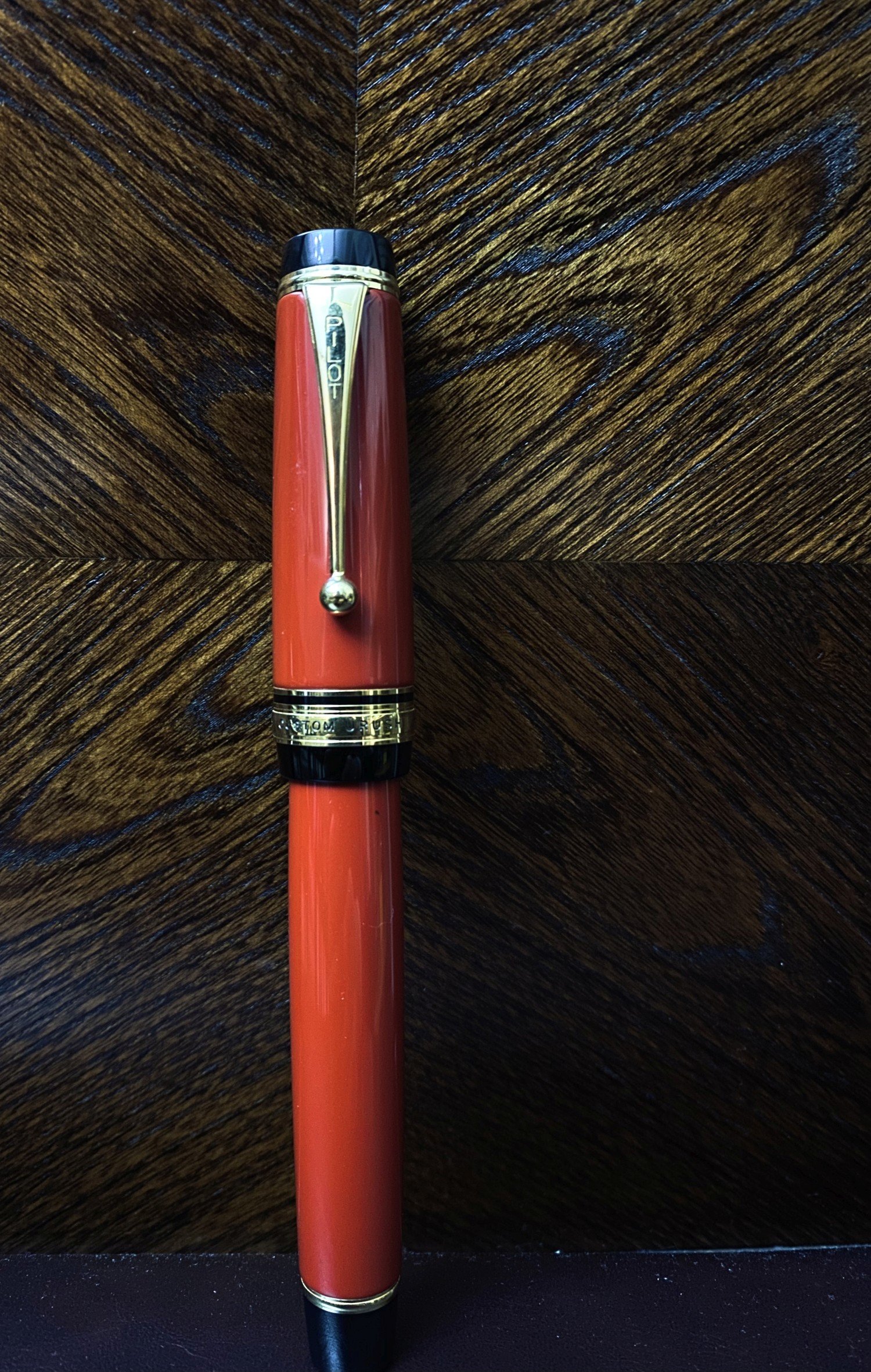
Pilot Custom Urushi Fountain Pen—More Like a Toy | Fountain Pen Enthusiasts
For a long time, I’ve been curious why Pilot’s high-end sub-brand Namiki released the Namiki 20-size Vermilion/Black Lacquer pen—when its own in-house Custom Urushi comes equipped with a tip that’s over one and a half times larger than the 20-size, features the same red raw lacquer, a hard rubber base that complements the lacquer even better, and is sold for only half the price of the Namiki 20-size. You’d think everyone would just buy the Custom Urushi, right? But the market tells us otherwise. I asked several pen enthusiasts online, and the response I got was: “The lacquer on Namiki is better, thicker, and more evenly applied.” This explanation seemed a bit too mystical and unconvincing to me. So, on my 18th birthday, with my dad's financial support (this author is not the WeChat official account operator ‘No-Zong’, but a high school student and fellow fountain pen enthusiast, also known as No-Zong’s “partner”. I aim to post an article every 20 days to a month, and apologies for the not-so-great phone photo quality—hope you’ll bear with it and keep following.
My first impression of this pen was simply: wow, this thing is huge. I’ve used the Montblanc 149—the king of the Big Three—and also the Over Size Pilot Custom 74 and 91 from Pilot and Namiki alike—but compared to this Custom Urushi, sorry, they’re still a bit “small.” Here’s a picture for comparison:

(From left to right: Apple Pencil 2nd gen, Pilot Custom Urushi, Montblanc 149, Montblanc 146, Platinum 3776, Parker 50s UK-made Jr. Pressure-Filled Dodo.)

Normally, pens of the same size are slightly smaller if they have a flat-top design rather than a torpedo shape (for example, the Pilot 74/91 or the Sailor 21k Flat/Tele). But as you can clearly see from the pictures, the flat-topped Custom Urushi is even bigger than the torpedo-shaped Montblanc 149. That should give you an idea of just how exaggeratedly large the Custom Urushi is.
Now let’s unscrew the cap and take a look at the nib size:
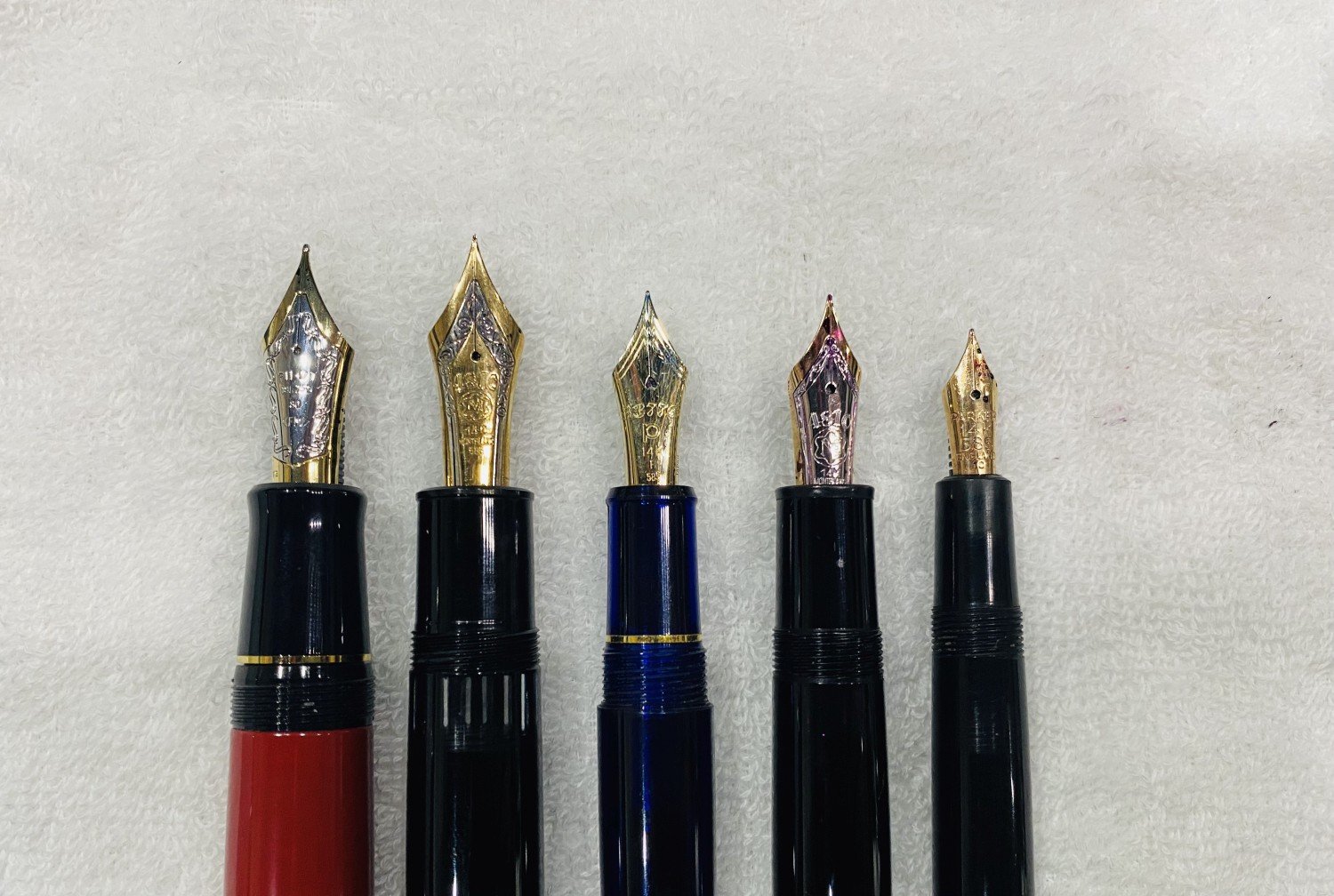
(From left to right: Pilot Custom Urushi, Montblanc 149, Montblanc 146, Platinum 3776, Parker 50s UK-made Jr. Pressure-Filled Dodo.)
As we compare, the size of the Pilot Custom Urushi’s nib is similar to the Montblanc 149—around 8mm (EU standard) or 40mm (China standard). It’s significantly larger than the 6mm or 35-size nibs found on the Platinum 3776 or Montblanc 146. Plus, the Custom Urushi has a very thick grip section, making the pen extremely unfriendly to hold for petite users or anyone under 175cm tall. I’m exactly 180cm tall, and while I can use it, it still feels just a bit too big—it’s essentially the largest size that I can comfortably use for extended periods.
Alright, the visuals are out of the way—let’s now talk specs. Below is a hand-written list of the Custom Urushi’s various specifications, written on Kokuyo 5mm grid paper. Please excuse my messy handwriting.
See how ugly my handwriting is? That’s the biggest issue with this pen—the nib is just too big and too soft. Of course, such a large and soft nib can be a bonus for those who are serious about calligraphy, because it almost feels like using a brush. When you write with normal pressure, the tines seem to collapse inward quite a bit, and the spring-back is not very noticeable. I imagine that users without a strong foundation in either hard-pen or soft-pen calligraphy will find it awkward to use. To be honest, Pilot doesn’t even market this pen as a writing tool. On their official website, the description uses vague language like 「ペンのしなりを存分に楽しめる」(Enjoy the flex of the pen), unlike its little brother, the Pilot 845, which is described as 「日常生活にも適した一品です」(A suitable tool for everyday use).
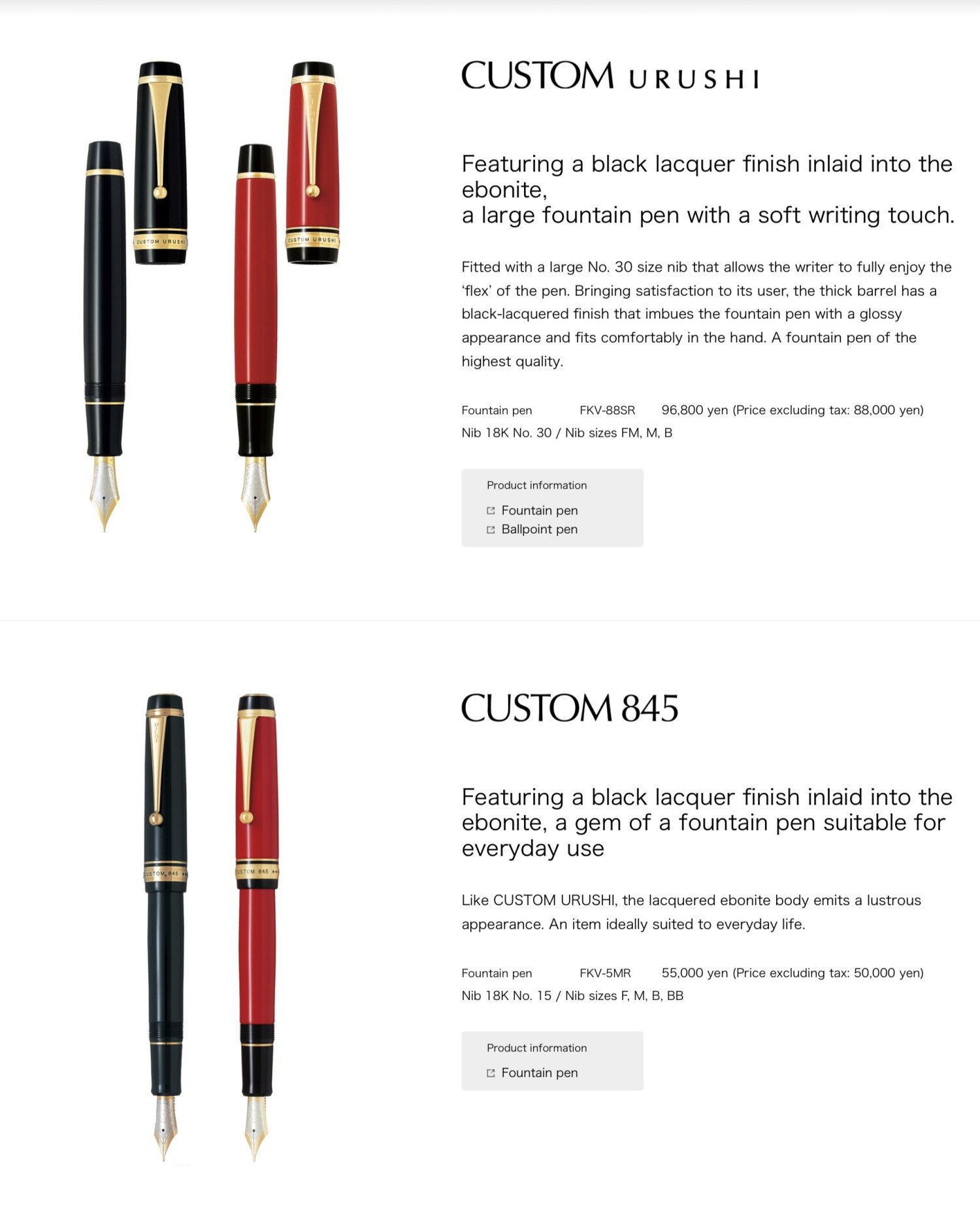
Another issue is that I might have gotten a lemon, but when I first started using it, the nib scratched the paper slightly when writing horizontal strokes. Fortunately, after writing a couple of English test papers, things cleared up.
As for writing performance, let’s look at this image again:
(I wrote the core socialist values—can’t go wrong with that
The three different sizes of handwriting you see correspond to casual large-letter writing, filling in 1cm grids, and 8mm grids, respectively. The result is pretty clear: don’t try to write in grids. It’s not because the Fine/Medium nib is too thick—in fact, on another Pilot pen I own, the Justus 95, the FM nib handles all kinds of writing situations with ease. Even as a student, in 95% of daily usage scenarios, my writing doesn’t come out timid or cramped. The main problem is that the nib is just too soft and too large, making it hard to control. The strokes wander all over the place, and it’s genuinely difficult to keep steady.
But from an aesthetic point of view, this massive nib is absolutely gorgeous. Here’s a picture for you:
(Front view)
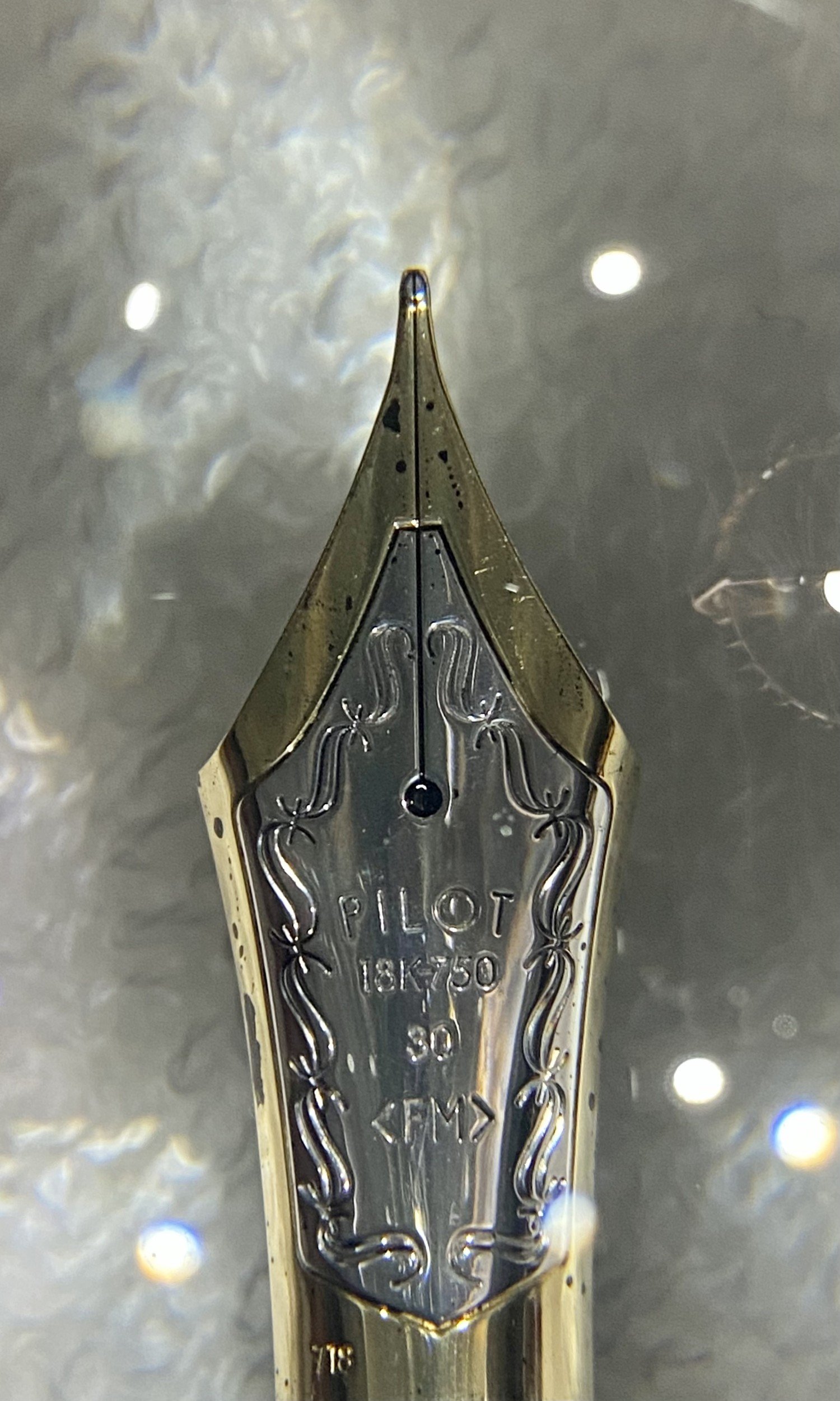
(Side/Iridium tip view)
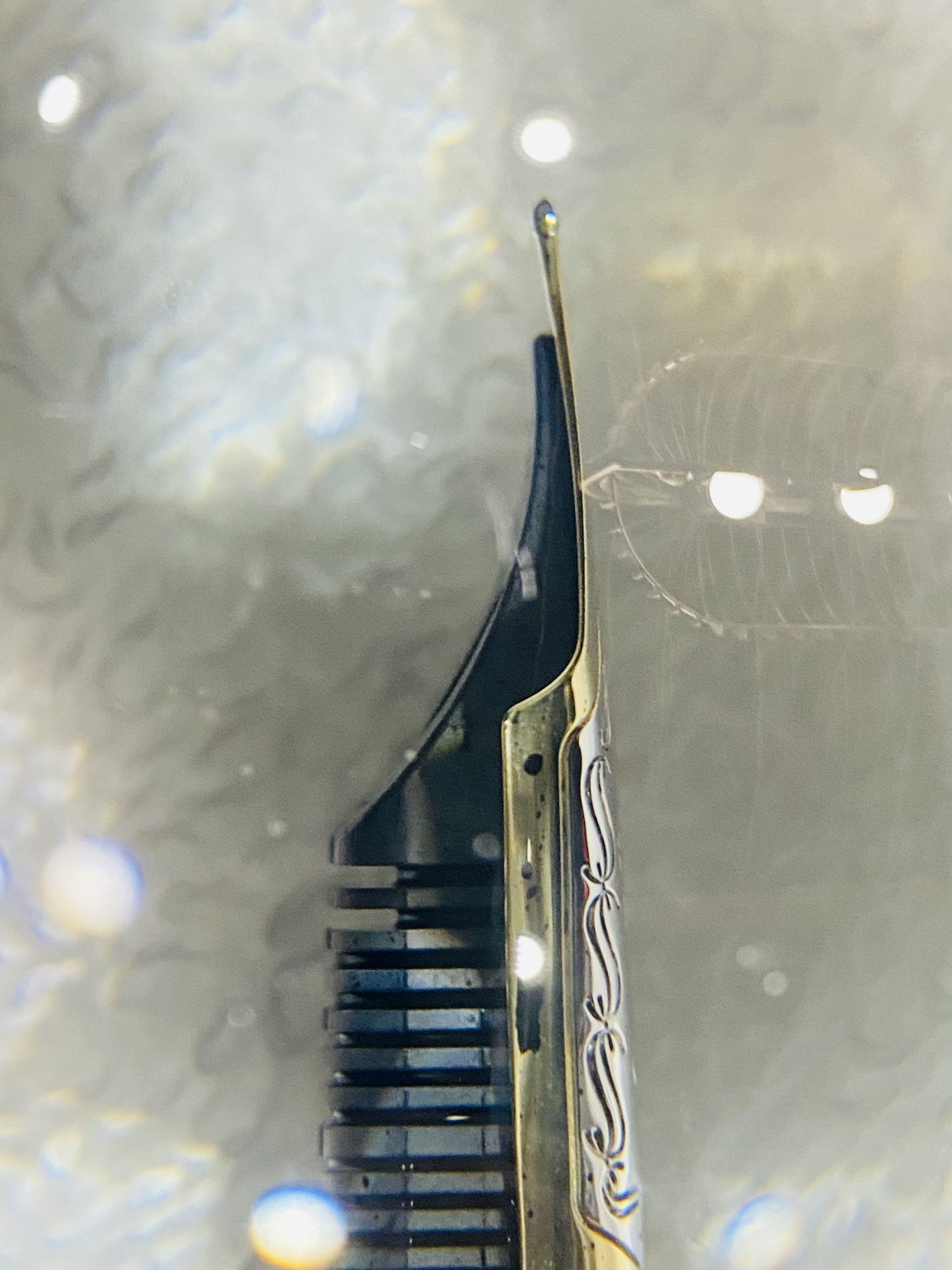
I’ve used quite a few pens, so let me briefly explain from a slightly more professional angle why this nib is so soft:
Assuming the same material and eliminating all other variables:
The larger the gold nib size, the softer the writing feel.
The flatter the nib (the lower its height), the softer the feel.
The wider the gold nib, the softer the feel.
Well, guess what? All three points perfectly match this particular nib. I won’t say more—I’m off to practice my calligraphy. I guess I’m just not cut out for this. Bye.
Now let’s talk about the feel of the pen in hand. One word: great. Two words: really great. As for the hard rubber and lacquer part—well, I won’t dwell on that. The feel is nice, but most people won’t notice any significant leap in quality. In other words, if you swapped out the barrel for celluloid, premium resin, acrylic, wood, or metal lacquer, you probably wouldn’t feel much of a difference. The phrase “hard rubber lacquer” is more like buying into the luxury feel and Pilot’s brand prestige.
Most importantly, despite its hefty 28g weight when unposted, the pen gives the initial impression of being surprisingly light due to its enormous size. We often talk about whether a pen feels heavy or light—but in reality, it’s more about your perception of the pen’s density.
Finally, I want to discuss the question of whether luxury stationery is “worth it” or not. From the perspective of an outsider, if you told someone on the street that you spent 4,000 RMB on a pen, most people would think you were crazy—or that you’re a “deep-pocketed” interesting person worth knowing. And if they then found out that this pen isn’t even meant for daily use, but rather to be “enjoyed” or to “appreciate the flex of the pen,” I bet even more people would think you’re out of your mind.
But from the perspective of a fountain pen enthusiast, at an MSRP of less than 100,000 JPY (about 4,000–5,000 RMB on the domestic second-hand market), you’re getting a flagship product from Japan’s top pen maker, with an oversized 18K two-tone nib, a hard rubber lacquer barrel and cap. Compare that to the same factory’s Namiki Urushi Lacquer Vermilion 20#, which comes with a much smaller 20-size nib, a copper barrel covered in lacquer, and costs 8,800 RMB after Japanese consumption tax—and is also “in limited supply” due to “handmade production” (official marketing hype), meaning you have to wait for overseas resellers. Suddenly, the Custom Urushi looks like an absolute steal.
So what are we really buying? Here, I’d like to debunk the notion that “the value of luxury goods lies in making others ask why you bought them”—a viewpoint that reduces luxury items to nothing more than social status symbols. The seemingly irrational act of spending four or five thousand—or even tens of thousands—on a pen isn’t actually about showing off. It’s about buying a deep sense of personal satisfaction and joy, which is fundamentally different from condescending “superiority.”
As the saying goes: “A otaku’s wall of collectibles could buy a Beijing apartment; photography can bankrupt three generations; cars drain the poor, watches drain the rich, and ‘working-class folks’ play with Namiki and Pilot.” You know, “a thousand bucks can’t buy what I want, so don’t let the wine cup sit empty under the moon.” Spending money on your passion? I don’t see the problem with that.